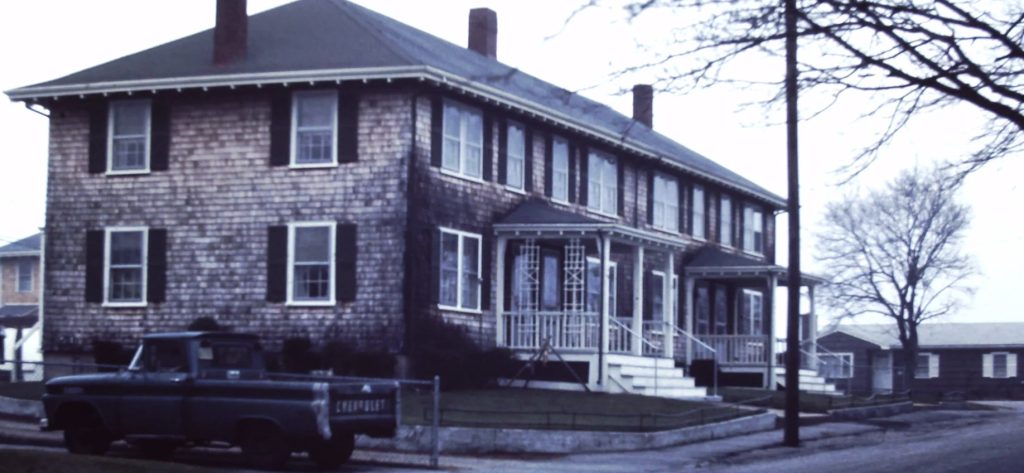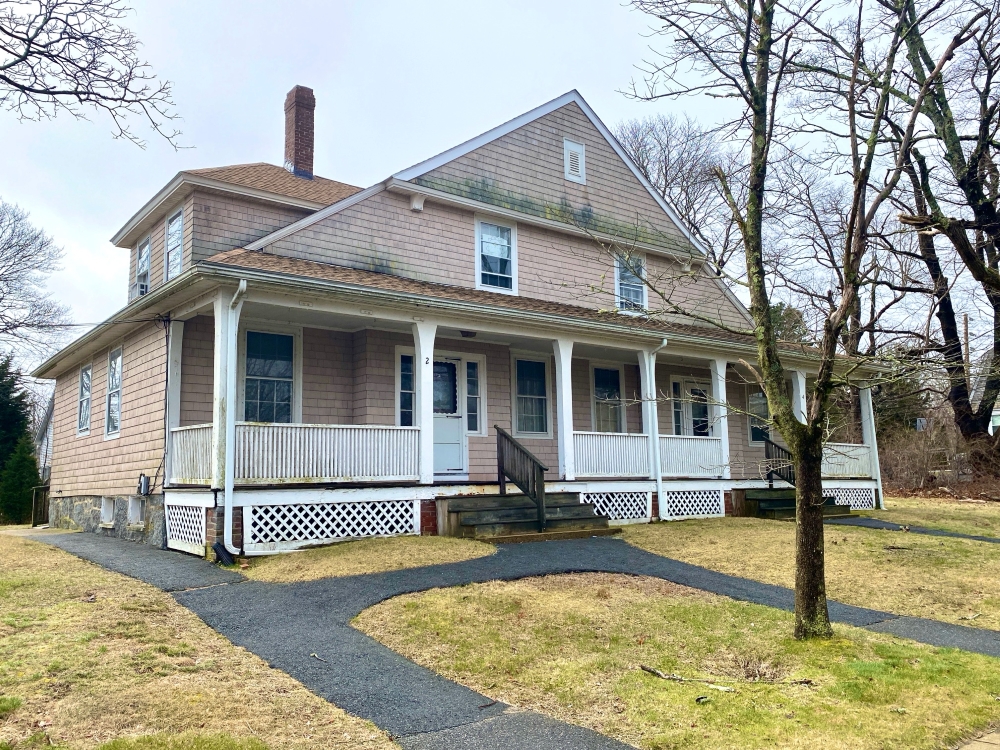Liz Tracy developed a passion for the house at 2-4 South Spooner St. a few months ago after her grandfather told her it was scheduled to be demolished.
“It takes away the history that was there,” said Tracy. “I’d love for it to go somewhere where you could maintain that two-family. The next step is to figure out if there is a place to move it.”
The house is a relic of Plymouth history that came long after the Pilgrims, when the Plymouth Cordage Company – at one time the world’s biggest rope maker – was Plymouth’s largest employer.
Tracy’s connection to that history began when she was growing up on Spooner Street in a similar house first owned by her grandparents.
The house she is trying to save was one of many built by the Plymouth Cordage Company. It started building housing for its workers soon after its founding in 1826. At first, the company built typical mill village tenement housing, with one long building housing as many as 13 families. But in 1899, it embarked on a more ambitious project to build two-family houses. By 1924, the company owned 125 of these homes, which it rented to employees. By then, the company had 1,779 workers in Plymouth.
In all, the company built 351 housing units. It later bought land on Liberty Street, Hall Street, and Standish Avenue, created 60-by-60-foot lots, and sold the homes – with mortgages – to employees, said Lucille Leary, director of the Plymouth Cordage Company Museum.
Most of the employees were immigrants, said Leary. They became the lifeblood of North Plymouth’s neighborhoods.
“They had streets that were Portuguese,” Leary said. “They had streets that were German. They had streets that were Italian. There was a lot of Italians on North Spooner Street.”
As workers moved out from the Cordage houses and built their own homes, Leary said, they moved together to form new neighborhoods.
“Centennial Street, Hamilton Street were German,” she said. “Peck Avenue was Portuguese.”
The company provided workers not just with homes but with all-day free kindergarten, free health care, an auditorium, a gymnasium, a library, movies, concerts, lectures, plays, a bowling alley, a band, sports teams, bath houses at the beach with swimming instructors, a restaurant, a cafeteria, and a newspaper.
“The whole idea was you take care of your employees,” said Leary.
The company closed in 1965, leaving a big hole in the town’s economy.
“That’s why we ended up with the (nuclear) power plant,” Leary said. They (the town) were going to lose one of their major taxpayers.”

But despite the many changes that have come to Plymouth, most of the Cordage houses are still standing.
The house on South Spooner Street has been used as an office building since 1985, said Joshua Bows, who bought it in 2002. He said it has several tenants, including therapists who appreciate the quiet space.
Bows bought the house as part of a package deal with the building next door, where he wanted to move the offices for his business, Merrill Engineers and Land Surveyors. The previous owner, Bows said, insisted that Bows buy both properties.
Bows is sympathetic to the house’s historical significance. He said his grandmother lived in a Cordage home.
At first, he considered renovating the South Spooner Street house, but the front porch is falling off, the foundation needs work, the floor joists in the basement are pulling away from the sill, and the windows are crumbling. He estimated that he would have to spend hundreds of thousands of dollars on renovations.
So Bows opted to tear down the building to put up an apartment building.
In November, the Zoning Board of Appeals granted him a permit to build a two-story, 6,000-square-foot, eight-unit apartment building on the lot.
The needed permits in hand, Bows sold the house to developers Russell Mills.
But the Historic District Commission said not so fast. In December, it imposed a 12-month demolition delay while Tracy and others looked for a way to save it.
“We saw the plans and it looks nice, but it just takes away a historic building in Plymouth,” said Michael Tubin, chair of the Historic District Committee.
Tubin said one option under consideration is moving the house across the street, but he said the zoning and other details have not been investigated.
“Maybe there’s some land that the town could identify that maybe we can get at a cheap price,” he said. “So, we’re putting the word out there and, hopefully, some people will come forward with some option.”
Bows said the new owners are open to moving the house, but a lot would have to be found and someone would have to pay for the move.
“There’s very few people out there looking to move this property without a financial advantage,” he said.
If she finds a place for the house, Tracy said, she could go to the Community Preservation Committee to ask for funds to support moving it.
But she is racing against a deadline.
“The demolition delay is just a pause for losing buildings,” Tubin said. “The true preservation tool would be a historic district. I think it’s important to start thinking about these 120 or so Cordage houses and start discussions about preserving them and having some sort of protection.”
Fred Thys can be reached at fred@plymouthindependent.org

